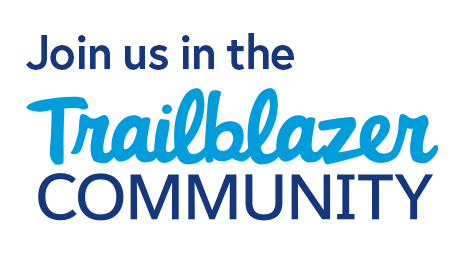We recently spent some time with Thais Pedroso, who offers insight from her time as a Senior Customer Support Specialist for Vicasso, having worked thousands of cases for Vicasso’s AppExchange products, and maintaining one of the highest survey averages in Vicasso’s history. We also asked Vicasso’s Product Director (and Thais’ manager), Howard Yermish, to provide a manager’s perspective on Thais’ tips.
End with the Beginning in Mind
Customer support is not for the faint-hearted. Each day presents a fresh batch of customer cases that can include complex problems. In fact, “57% of customers say COVID-19 has raised their standards for customer service.” According to the 2021 Salesforce Trends in Workflow Automation report. At the end of the day, though, most support agents express a similar sentiment: “I want to have a stress-free work environment where I can manage cases in a productive and timely manner.” Support teams struggle when they only see the chaos directly in front of them.
The best support agents also share a keen sense of efficiency. Often, agents must address critical issues according to different priorities or service agreements, and agents must be organized to stay productive. So how do the best agents manage workload and workflow?
“It’s all about the process,” says Thais. When we asked what “proactive support” means for her, Thais said she addresses customers’ issues before they occur. “By anticipating issues in advance,” she said, “I can resolve future problems.” The most critical part of keeping agents productive is to keep the work seamless and to keep your agents happy. Learn how Thais utilized the tools in Service Cloud to streamline the customer support process to stay productive and happy.
Three Ways to Increase Employee Satisfaction
1) Streamline efficiency for cases
Much like making a recipe, you want to have your ingredients properly set out, like mise en place for case management. To stay productive, Thais organizes cases in Salesforce to resolve customer’s issues by priority.
- Prioritize Your Caseload: When you prioritize “active” customers to resolve issues, you create prompt replies, quick resolution times, and happy customers. A helpful resource such as Case Flags prioritizes cases by color-coding urgent or high priority cases, especially if you have a contracted Service Level Agreement (SLA). Using a standard Salesforce List View, Thais checks the main support queue to see if anything is new or high priority. Flagged cases show that the customer is waiting for a response or follow-up.

- Anticipate Issues and Stay Organized: When you plan and anticipate, you eliminate user frustration and create a better experience for the customer. When Thais plans her day, she organizes “next steps” for resolving cases while saving time for urgent matters. By following up on cases first thing, she can tackle existing issues early, working with the customer to a quick resolution.
Howard’s Note: We’ve added two custom fields to our org: Next Steps (text) and Follow-up On (Date/Time). The Next Steps field is a simple reminder when the Agent opens up the case. As a manager, I can easily report whether agents populate this field and coach them to stay organized. Using simple local automation, the Follow-up On field will set the flag in Case Flags, resurfacing the case in the future if we haven’t received a reply from the customer. This prevents cases from getting stale and ensures a consistent follow-up process.
2) The art of troubleshooting
Knowing where to look for information when troubleshooting cases is crucial. Below, Thais shares her troubleshooting know-how.
- Collaboration is Key: The sooner an agent understands an issue, the sooner they can collaborate with the team, and the sooner the client will get an answer and resolution. An agent must identify the issue, collecting enough information to ask for help. Thorough communication that gets to the point avoids hiccups between colleagues and customers. Timely follow-ups and check-ins can establish a good relationship with customers who appreciate knowing they matter and that the support team is working towards a solution.
- Know Where to Look for Information. Even though your agent may know about your products or services, they may need to find redundant information–information found (but not shared) by others. Information from prior cases, knowledge articles, or documentation can be immensely valuable for current customers. If we document our cases, we have an official and trustworthy source–something a customer can trust. Documentation essentially creates new knowledge. As Thais notes, “If I see new or existing information, and it helps to solve an issue, I make a point to make it official by creating a new piece of knowledge in Vicasso's internal knowledge base so it can be indirectly shared.”
3) Reflect on the day to prepare for tomorrow
Before finishing her work, Thais reflects on the day while preparing for the next. Setting herself up for success, she outlines precisely what must be done next, assuring she works on all outstanding cases and has any necessary information to continue work through the upcoming days. Proactive organization is Thais’ key to success.
- No Outstanding Cases: If a customer replied during the workday, a follow-up is expected. If the query is something you know by heart, send a thoughtful answer. If you don’t know, send an honest reply, telling the customer you need to look for more information, troubleshoot, or perhaps involve someone else to identify and resolve the issues. As Thais says, “Don’t leave them hanging! Customers appreciate knowing where you stand and don’t mind waiting a bit longer for that spot-on resolution.” When you set clear expectations in your follow-up response, your customer will understand why their case may not be solved as quickly as they hoped.
- Keep Cases Transparent: Your agents might be asking, “If I’m not here, can others work my case?” To maintain a seamless support experience, make sure your cases are transparent with key fields filled out, including Next Steps and Follow-up On (Date/Time). With key information, other support agents or a manager can quickly identify what is going on and the next steps, assuring an uninterrupted support experience from start to finish. In the end, the team shares a common goal: to resolve issues successfully.
Howard’s Note: Don’t underestimate the value of “finish your day and be done with it.” When you know you’ve closed out the day properly, you can mentally relax and recharge.
“Finish each day and be done with it. You have done what you could. Some blunders and absurdities no doubt crept in; forget them as soon as you can. Tomorrow is a new day. You shall begin it serenely and with too high a spirit to be encumbered with your old nonsense.”
― Ralph Waldo Emerson
To evaluate your company’s tools and processes, take the Service Experience Assessment, which offers an acute view of your team’s capacity to deliver memorable customer service.
Vicasso
We empower the world to deliver the perfect service experience every time.



